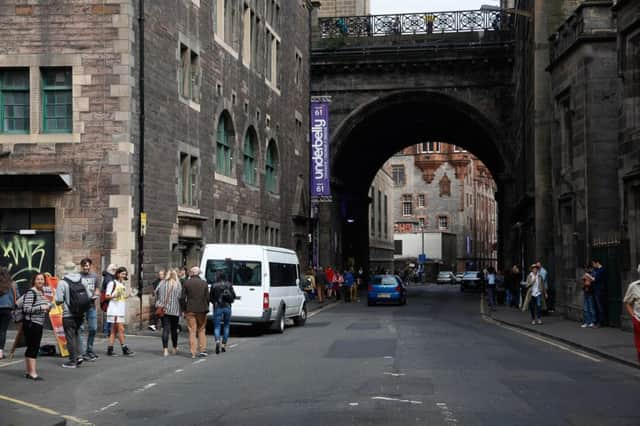Alastair Dalton: Is it time for a pavement parking ban?


When I wrote in a previous column that cyclists present a bigger menace to pedestrians than drivers – meaning on pavements – social media went crazy.
Hundreds of tweets ridiculed the suggestion, arguing the opposite. They referred to the far high numbers of walkers being killed and injured by motorists than cyclists.
Advertisement
Hide AdAdvertisement
Hide AdHaving written about cyclists on paths they share with walkers and – somewhat tongue-in-cheek – about pedestrian congestion on pavements, I’m completing the trilogy by focusing on drivers.
It’s clear that while cyclists on pavements where they shouldn’t be could be regarded as an irritant and menace, other vehicles present a bigger threat.
In addition to vehicles hitting pedestrians when crashing off the road, they all too often present a dangerous obstruction when parked either on the pavement, or, thoughtlessly if not illegally, off it.
The crux of the problem appears to be that when they park, drivers want to ensure they are out of the way of other motorists.
It doesn’t seem to occur to some of them that this may well be in the way of people on the pavement or crossing the road.
So what you get are vehicles parked partially or wholly on the pavement.
In some cases, that forces pedestrians onto the road to get past, putting vulnerable groups such as the disabled, elderly or those with young children at particular risk.
I’ve said it before, but it’s worth repeating, that at least one health board has highlighted that damage to pavements caused by vehicles has caused the premature death or serious injury of elderly people who trip and fall.
Advertisement
Hide AdAdvertisement
Hide AdA long-awaited pavement parking ban forms part of the Scottish Government’s transport bill going through Holyrood.
However, vehicles can pose a significant hazard even off the pavement.
You might think double yellow lines at junctions, such as on residential streets, would outlaw parking.
Supermarket and other delivery vehicles with under-pressure or inconsiderate drivers are often seen parked on such corners, threatening the safety of anyone trying to cross the road, including children near schools.
But unless there’s a “No Waiting, No Loading” sign, or short double yellow lines painted on the kerb itself, those making deliveries could potentially park legally for ten minutes in places such as Edinburgh and Glasgow.
They could still be classed as an obstruction and be fined, but city council officials have advised that this has to be done by a police officer, rather than council parking attendants who are the main enforcers of parking regulations.
Pedestrians have some limited rights over drivers, such as the power to stop the traffic at pelican and zebra crossings, but there is a vast imbalance over who takes precedence on the roads that remains as much a cultural and historical problem as a legislative one.
The hope is that a pavement parking ban – if it succeeds in being introduced after several false starts under previous attempts – is the catalyst for a wide-ranging reassessment of how road – and pavement – space is allocated.
